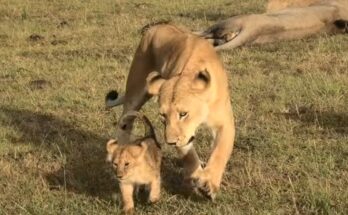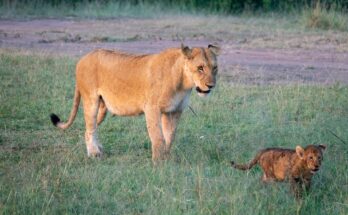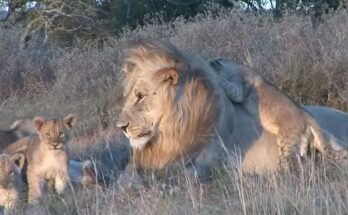
In the golden warmth of the African savanna, a lioness gently nudges her cub with her nose, inviting him to play. The cub, small and full of energy, tumbles forward on wobbly legs, swatting clumsily at his mother’s tail. With patient eyes and a soft rumble in her throat, the lioness crouches low, allowing her playful cub to climb onto her back. Their interaction is tender, filled with affection and trust.
Playtime is more than just fun—it’s a vital part of the cub’s development. Through playful pouncing, biting, and chasing, the cub learns the skills it will one day need to survive in the wild. The lioness knows this instinctively. She lets the cub bite her ears, tug at her fur, and leap clumsily onto her head, all the while carefully controlling her strength. Her large paws, capable of bringing down prey, now move with surprising gentleness as she bats at her cub in return.
The savanna echoes with the soft growls and playful grunts of the pair. Occasionally, the lioness will break into a mock chase, her cub sprinting behind her in bursts of enthusiasm, only to collapse into the grass, panting and joyful. It’s a moment of joy in the wild—a break from the harsh realities of survival.
These playful sessions help build a strong bond between mother and cub, laying the foundation for trust and confidence. For the lioness, it is also a moment of rest and connection, a chance to nurture her young with love, patience, and care. As the sun begins to set, the two curl up beside each other in the tall grass, their hearts full and their bond stronger than ever.


